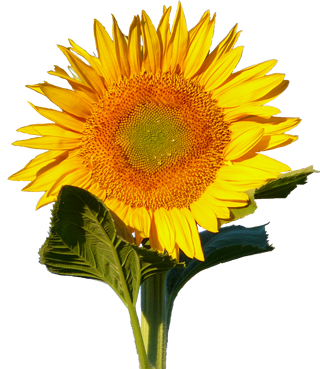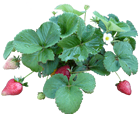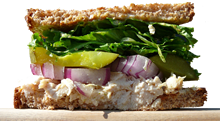
Garden and Plate
The Molecular Biology of Nutrition











Once created, how do carbohydrates get to where they're needed? They won't do plants much good if they pile up inside the chloro-plast. How do they get into the roots and fruit? Most importantly, since animals can't create carbohydrates themselves, how do they get into our cells? The articles below tell us how the carbohydrates move about.
Before sucrose can move throughout the plant, it must first be created in the cytosol. GAP and DHAP are the building blocks from which sucrose is ultimately derived, but they are produced inside the chloroplast. They also contain phosphate groups, which are polar, so they can't make it across the chloroplast's membrane from the stroma into the cytosol of the main cell without help.
To make the transit they must travel through a phosphate translocator, a protein-based passageway that's embedded into the inner membrane of the chloroplast. This passage-way swaps a trios phosphate molecule (GAP or DHAP) for a free phosphate group from the outer cytosol. That's how GAP and DHAP make it into the cytosol, where they combine to become fructose-6-phosphate, and then sucrose.
Sucrose is produced in the cytosol of the plant cell, outside of the chloroplast. Plants create sucrose because it's combination of stability and small size make it more mobile than other forms of carbohydrate. It's small (compared to starch), and it's stable because (unlike all mono and most disaccharides) it's a non-reducing sugar. It can only be broken apart (hydrolyzed) by sucrose synthase or invertase in plant cells, or by sucrase in the intestines of animals.
Even though sucrose is the form in which carbohydrate is moved throughout a plant, sucrose can't make it across the membrane of a cell on it's own. It must hitch a ride with a proton (H+) through a protein passageway called a H+ Sucrose pump. When combined, the two of them change the shape of the pump, which is embedded in the cell's membrane. The change in shape opens up a passageway through the protein pump. This in turn lets the proton and sucrose molecule move from the cytosol of the cell into the plant's phloem. The proton flows down it's concentration gradient, and the sucrose tags along. They then enter other cells from the phloem, where the sucrose can be used in a variety of ways.
In plants like sugar cane and sugar beets, sucrose is the preferred form of carbo-hydrate for storage. In other plants, sucrose is placed in fruit and berries (along with glucose and fructose) to make it sweet. This is also where fructose is most often found in it's monosaccharide state. It's sweeter than glucose, which makes it the best choice for attracting animals (which is what the creation of fruit and berries is all about).
Most plants prefer to store carbohydrate as starch, which is assembled from glucose. Corn, potatoes and the grains are examples of plants that produce large amounts of starch. In these situations the sucrose is broken down for the glucose, which is then synthesized into starch for storage in the amyloplast of any cell, or in the chloroplasts of any cells that have them. If more glucose is desired, fructose can be converted into glucose using the xylose isomerase enzyme.
Plants also use glucose in the manufacture of cellulose, the structural material that provides support. Wood is mostly made of cellulose. Last but not least, glucose is the main source of readily available energy for both plants and animals.
Now that we've tracked carbohydrates from the chloroplasts in which they were created to the places where plants store and use them, it's time to see how the carbohydrates make it from plant cells into animal cells. To find out how this is accomplished, we need to look at digestion.
Two full turns of the Calvin Cycle produce two "extra" molecules of glyceraldehyde 3-phosphate (GAP). These are then combined into a single molecule of fructose 6-phosphate (F6P) in reactions that are identical to those in steps six through eight of the Calvin Cycle.
Plants use F6P to create two forms of carbohydrate (starch and sucrose). Starch is created inside the chloroplast, and is used for storage. Sucrose is created outside of the chloroplast (in the cytosol), and is used to transport carbohydrate to other parts of the plant. We'll look at the creation of starch first, then at the creation of sucrose.


Create Sucrose |